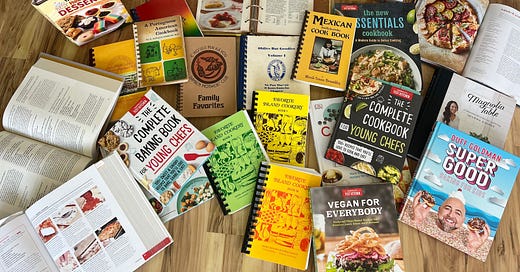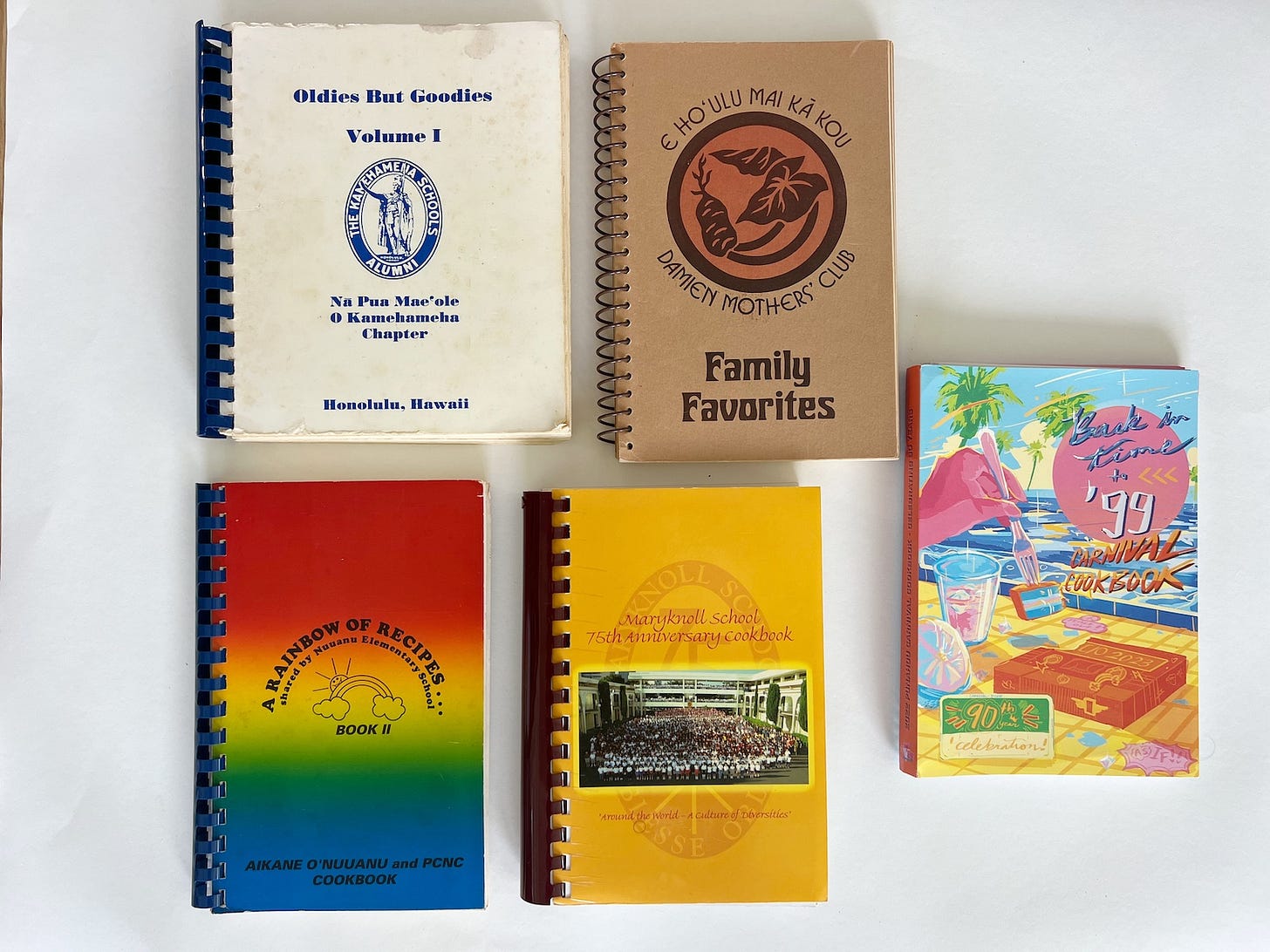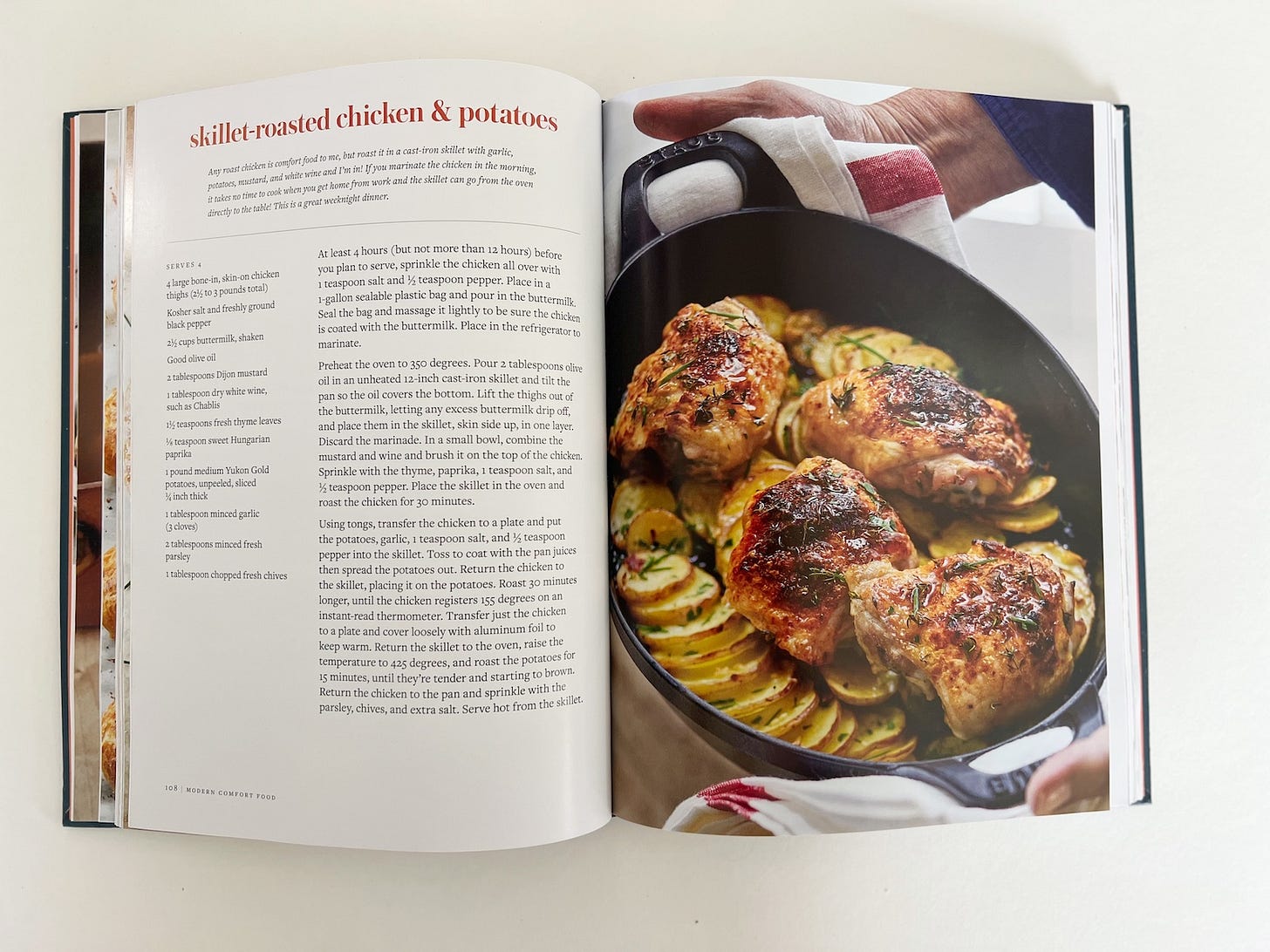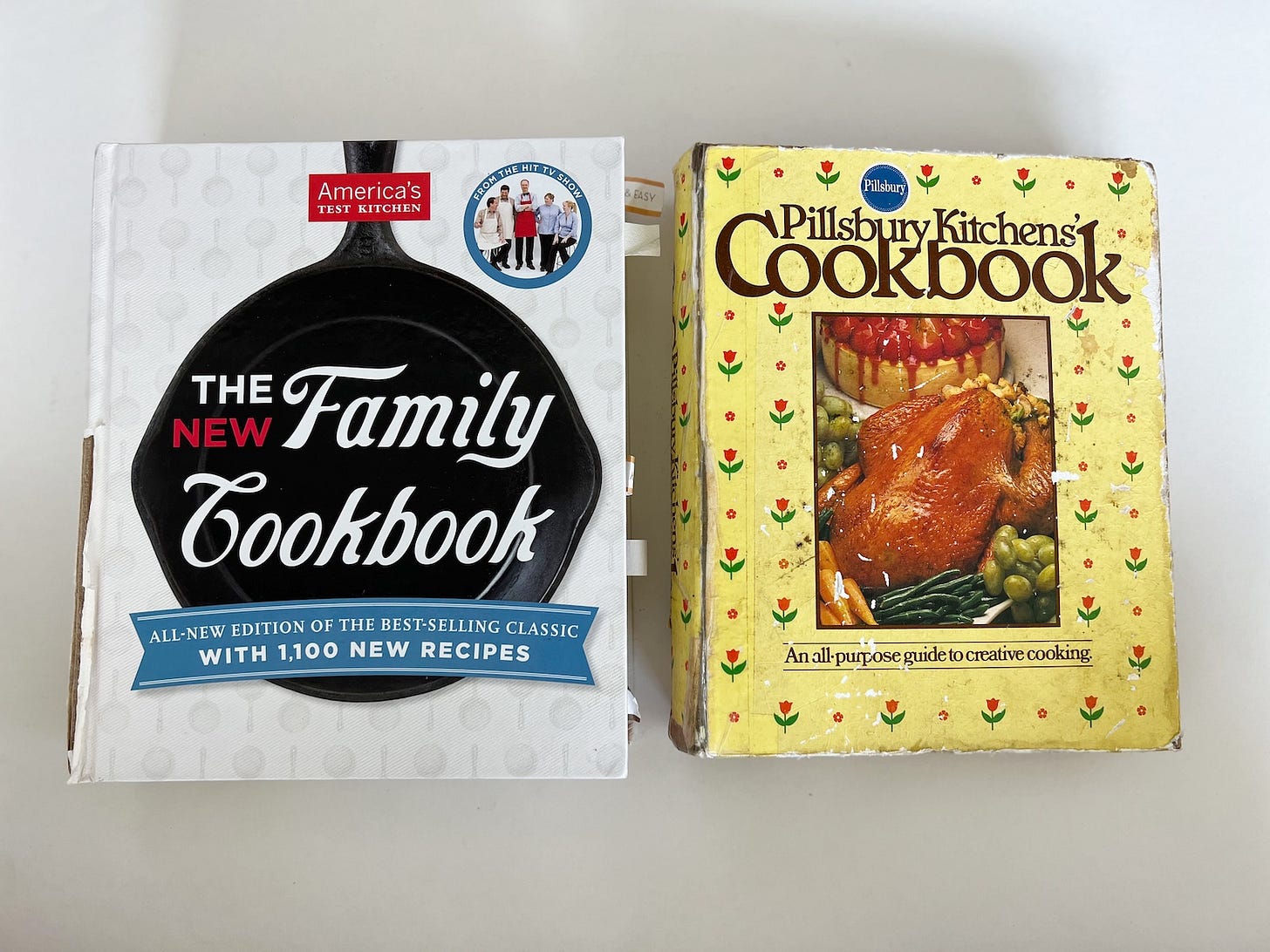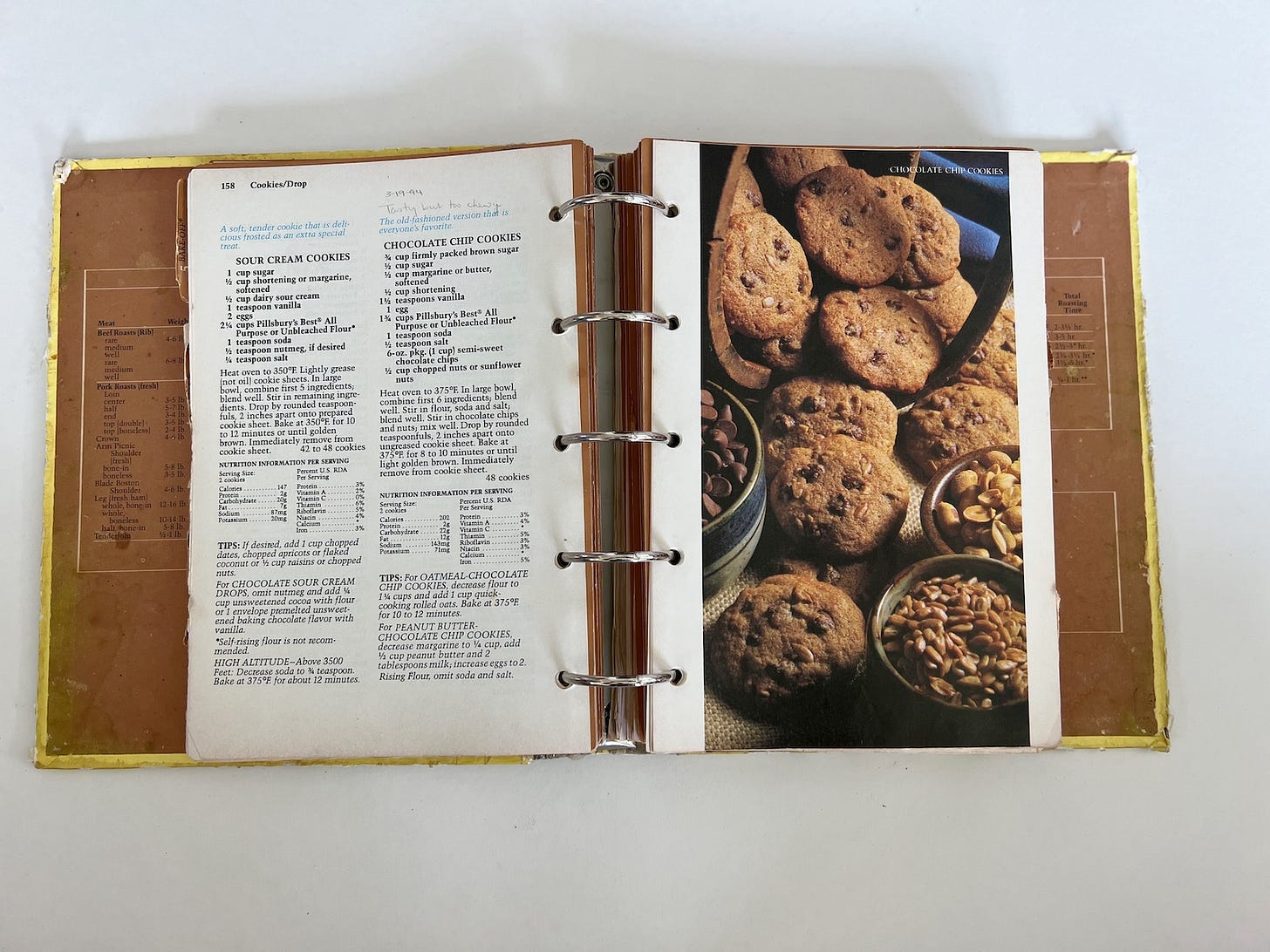(This post contains affiliate links. If you use these links to buy something we may earn a commission.)
I have a lot of cookbooks.
A lot meaning they fill up several bookshelves in two different rooms in my house.
I don’t use all of them; some just make me happy like “Fifty Shades of Chicken” by F.L. Fowler (which has some great chicken recipes with names like Erect Chicken and Hashing It Out the Morning After.) I got Peter Merriman’s “Merriman’s Hawaiʻi” cookbook specifically for his famous strawberry cream pie recipe — which, for some reason is $383.83 on Amazon right now — and “Sister Pie: The Recipes and Stories of a Big-Hearted Bakery in Detroit” by Lisa Ludwinski solely because I love the story about this little urban bakery. (I don’t make many pies.)
I’ve bought and collected cookbooks since I was a kid, starting with the Betty Cocker Cookie Cookbook published in 1987. And I haven’t stopped.
My mom was a cookbook hoarder — er, I mean, collector. She had dozens and dozens and dozens of cookbooks all over the house, lined up in kitchen cabinets and stashed on bookshelves. Like me, she probably only used a few of them; most of the recipes we used most often were handwritten on index cards. Still, we loved flipping through these books, inspired to cook something new or bake something familiar — or just marveling at all the ways you could use beets.
We’re suckers for fundraiser cookbooks — from schools and churches, at bake sales and craft fairs — because, my mom always said, the best recipes were always in these. These recipes came from people’s homes and families, they were often the foods we liked to eat, too, and she was right.
Some of my most beloved cookbooks were published by the Honpa Hongwanji Hawaiʻi Betsuin in Nuʻuanu. There are five books in the collection, the first published in 1973 and the last in 1995. (You can still order these books from the church. Click here.)
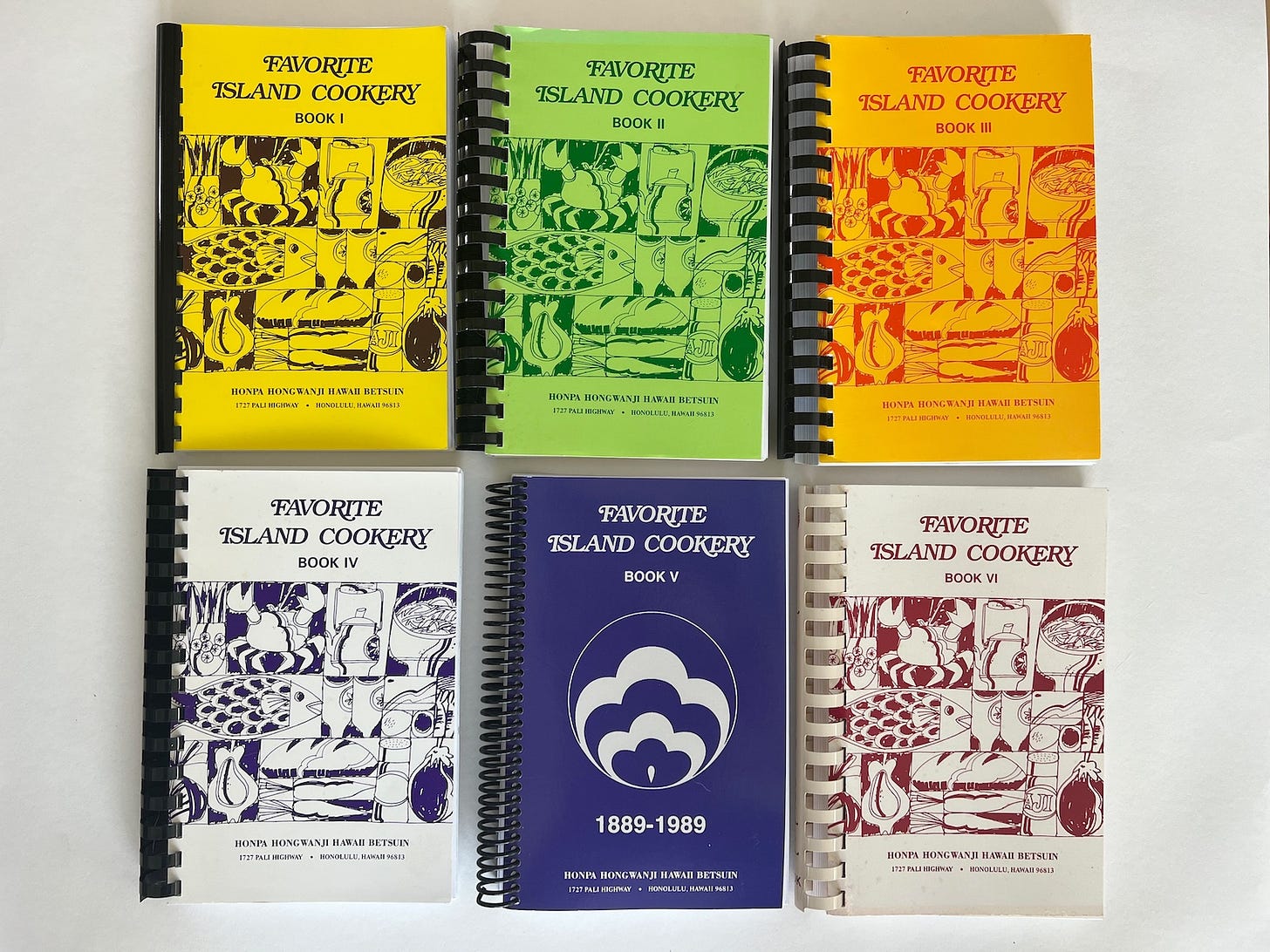
Where else would you find local recipes like chili pepper water, custard mochi, Portuguese bean soup, ice box malasadas and something called Economical Roast Beef?
When I’m looking for a local recipe — and I can’t find my mom’s — I first turn to these books. They’ve never let me down.
Want to raise money? Sell a cookbook. It doesn’t even have to be pretty; you don’t need photos. I will buy them.
The 1983 cookbook published by the Kamehameha Schools Alumni Association is one of my mom’s and my all-time favorites. I have Post-its on recipes for sweet bread, masaladas, Hilo-style Portuguese sausage (with handwritten notes from my mom), pasteles and pickle mango. (If you’re from Hawaiʻi, it’s “pickle mango,” not “pickled mango.”)
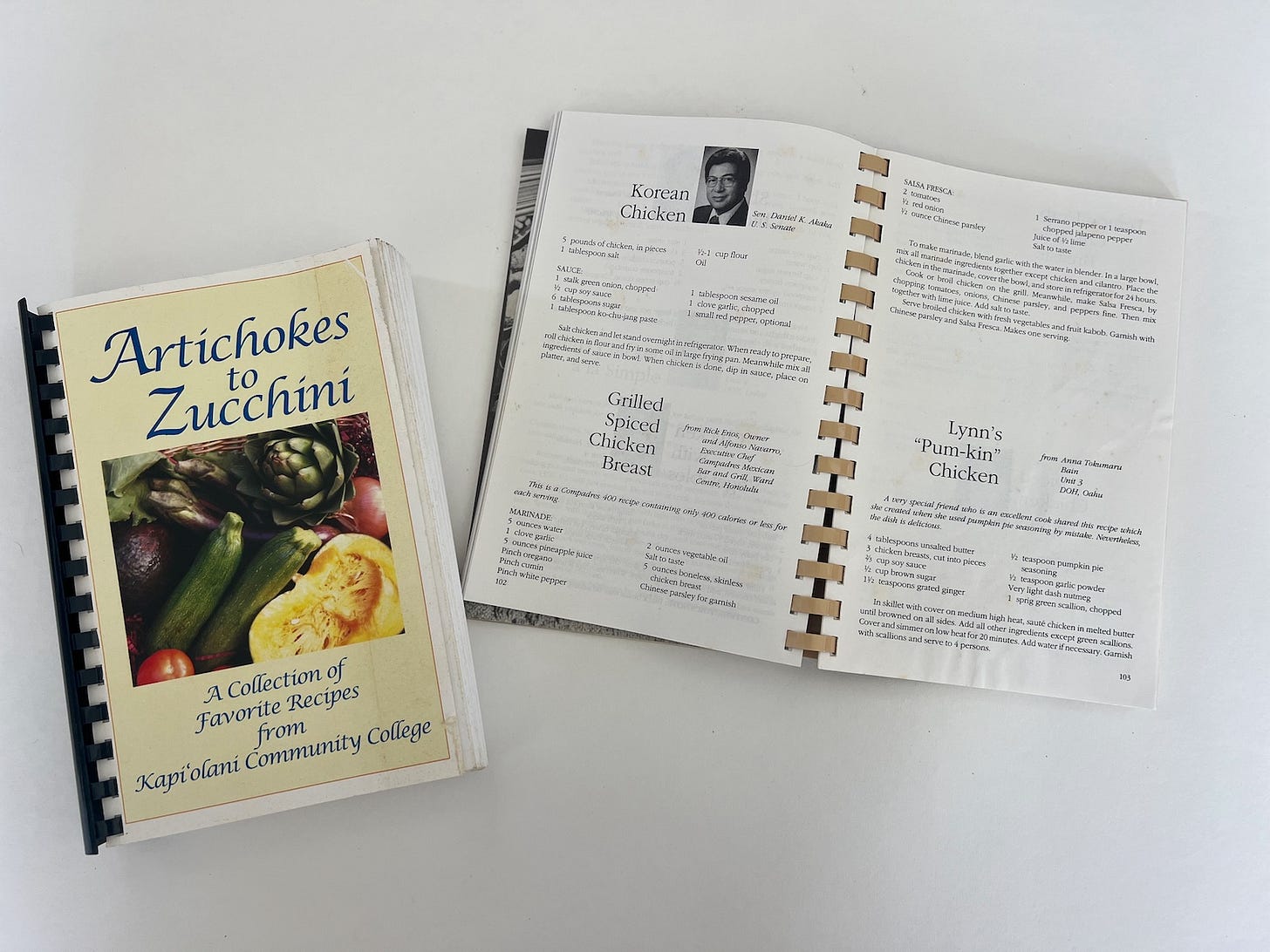
The Hawaiʻi Government Employees Association (HGEA) used to sell a cookbook that had recipes from government workers, chefs and lawmakers. Former Gov. John Waiheʻe shared his family recipe for banana bread and the late U.S. Sen. Daniel Akaka gave his recipe for Korean chicken. (Sometimes it’s just fun to browse them.)
Right now my collection runs the gamut from old-school fundraiser cookbooks to slick, modern books like Ina Garten’s “Modern Comfort Food: A Barefoot Contessa Cookbook.” The latter combines gorgeous photography with both simple recipes and Instagram-worthy dishes. In this particular cookbook — her 12th, and, really, they’re all worth buying — she focuses on old-fashioned comfort food, from crinkled chocolate chip cookies to breakfast tacos. What I love about Garten’s cookbooks is simple this: Her recipes are reliable and always great. I trust her. She reminds me of my mom, only with a way nicer (and cleaner) kitchen.
I’m also a fan of any cookbook published by America’s Test Kitchen. I have more than a dozen of its cookbooks, from “The Complete Cookbook for Young Chefs” to “The Complete Mediterranean Cookbook.” Like Garten, these recipes are reliable and trustworthy. Because that’s what ATK does. It tests recipes, ingredients, products, cookware, everything — then shares it.
Right now my go-to cookbooks are America’s Test Kitchen’ “The New Family Cookbook” — which is, seriously, a great gift to give — and my mom’s copy of the Pillsbury Kitchens’ Cookbook.
The first one is one of my all-time favorites, mostly because it has recipes for just about any dish you can think, with simple, step-by-step instructions. This is where I learned how to make eggplant Parmesan, naan tarts with fig jam and prosciutto, and a beef taco bake that’s in regular rotation in my home.
And I love the tips in this book, from “Don’t prepare garlic and onions in advance” (because they release sharp odors and strong flavors that become overpowering with time) to “Salt the water, don’t oil it” when cooking pasta (because adding oil just creates a slick on the surface and doesn’t do anything for the pasta). So helpful! I feel like I learn something new every time I browse it.
But it’s the Pillsbury cookbook that I cherish most. These are the recipes my mom often used and modified, from the cinnamon-sugared doughnut drops she made me all the time to the cinnamon rolls I recently learned to perfect. Flipping through this cookbook is like talking to my mom. I can hear her voice, see her handwritten notes in the margins. It feels like a big hug.
Now that my mom is gone, I have to turn to these cookbooks to recreate the dishes she made, the ones that remind me of her. I can’t call her to ask whether I use baking soda or baking powder in a certain recipe, or how long I’m supposed to let the yeast bloom in warm water. (And how warm is the water supposed to be again?) I have to rely on either my memory or these cookbooks — and I trust these cookbooks a little more.
I will be posting soon about the specific cookbooks I’m using these days, from a few focused on getting kids in the kitchen to a couple of great vegan and vegetarian ones that really shifted the way I think about vegetables.
Thanks for reading!
xoxo,
CTF

